If you pull out of the north gate at Winged Foot Golf Club onto Old White Plains Road and turn left, there are two more top 100 golf courses within four miles—the same distance one normally covers walking a round of golf. Perhaps because they are private clubs, the four Westchester, New York, courses just off Old White Plains/Mamaroneck Road do not tend to get mentioned in the same breath as 17-Mile Drive, the Peconic Bay, or Scotland’s Golf Coast (East Lothian), but Fenway Golf Club, Quaker Ridge Golf Club, and the East and West Courses at Winged Foot Golf Club stand out not just because they are great courses but because they were all designed by the same man, A.W. Tillinghast.
What elevates these courses, even in Tillinghast’s incredible portfolio, is that they offer distinct challenges and styles yet share a similar feeling. While some architects of his era built variations on the same handful of holes, Tilly’s creative spirit and insistence on originality is on full display in Scarsdale/Mamaroneck. Boasting maybe the finest collection of 72 greens anywhere in the world in such close proximity, these parkland masterpieces offer a glimpse into what earned Tillinghast the moniker “Dean of Golf Course Architects.”
A.W. Tillinghast grew up in Philadelphia, but his connection to the history of golf was forged in St. Andrews, where he spent time with Old Tom Morris. While most of Tilly’s work was inland and on heavy soils, there is no doubt his time with the Grand Old Man of Golf rubbed off on him.
-
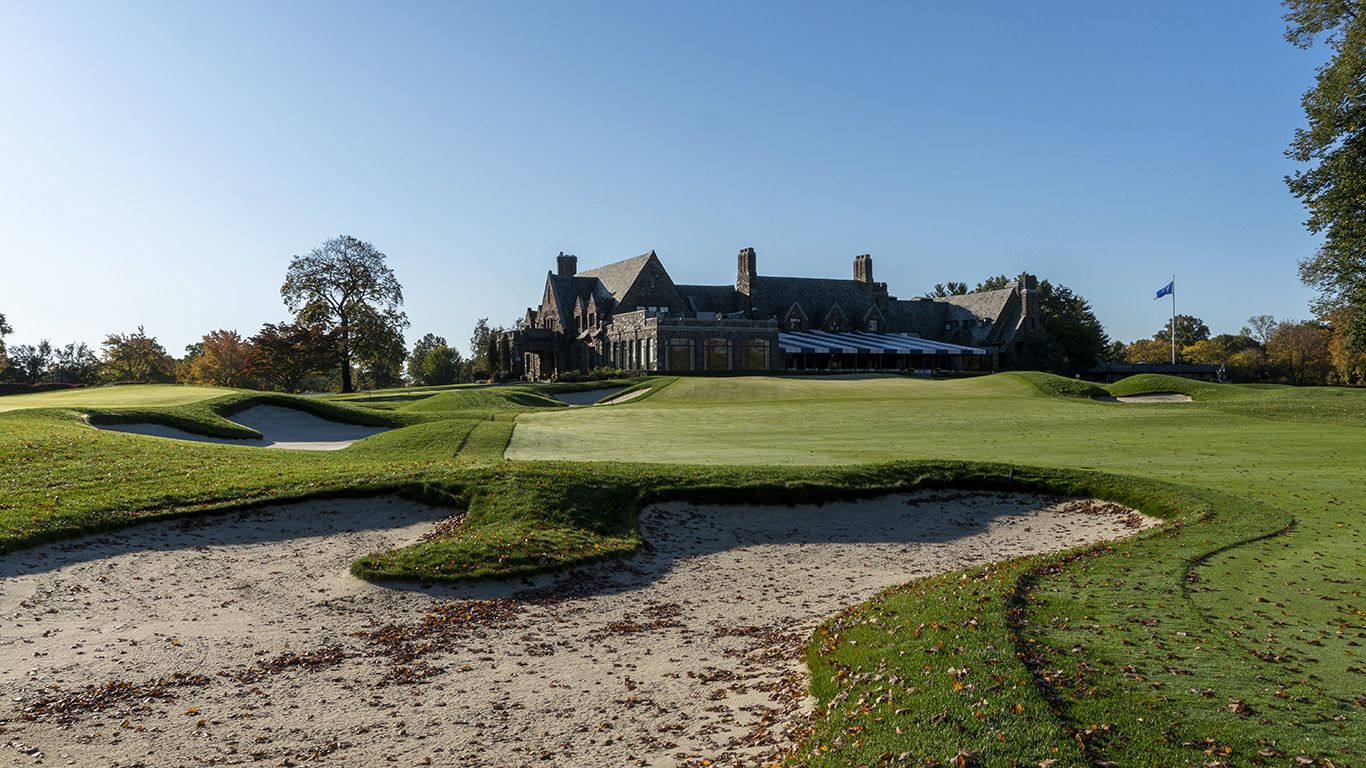
The 18th hole at Winged Foot East. Photo credit: Jaeger Kovich
-

Looking across the 11th green to the 5th at Quaker Ridge. Photo credit: Andy Johnson
-

The 11th hole at Fenway. Photo credit: Jaeger Kovich
Overarching characteristics shared by all four courses at the three clubs
- Use of the natural landscape to make each course unique and beautiful
- Putting surfaces with immense character that blend with the approaches and present several “paths to the green” (a Tilly term)
“Surely I feel that I have never attempted a more important contribution to golf course construction than this: the immaculate preparation of approaches to greens.” -A.W. Tillinghast
What makes the three clubs unique?
The properties
As is typical in Westchester County, all three courses have heavy, rocky soils in parkland settings, with large specimen trees, rock outcroppings, and meandering creeks. These conditions lend themselves to push-up greens and terra cotta drain tiles.
The courses do vary topographically, however. If you had a group of architects walk the properties prior to development, most would probably pick Quaker Ridge. It’s the smallest of the three, but it has good rolling movement with almost no slopes too steep for golf. Quaker also has a winding creek that can be used on a number of holes. Winged Foot is the flattest of the three sites but is by no means without charm. The more subtle landforms provide a fine environment for two different—but equally great—championship courses and a vastly different routing exercise than that at Quaker Ridge. The land at Fenway, originally called Fenimore, is dominated by the big hill that takes up over half of the property.
-

The 17th hole at Quaker Ridge. Photo credit: Andy Johnson
-
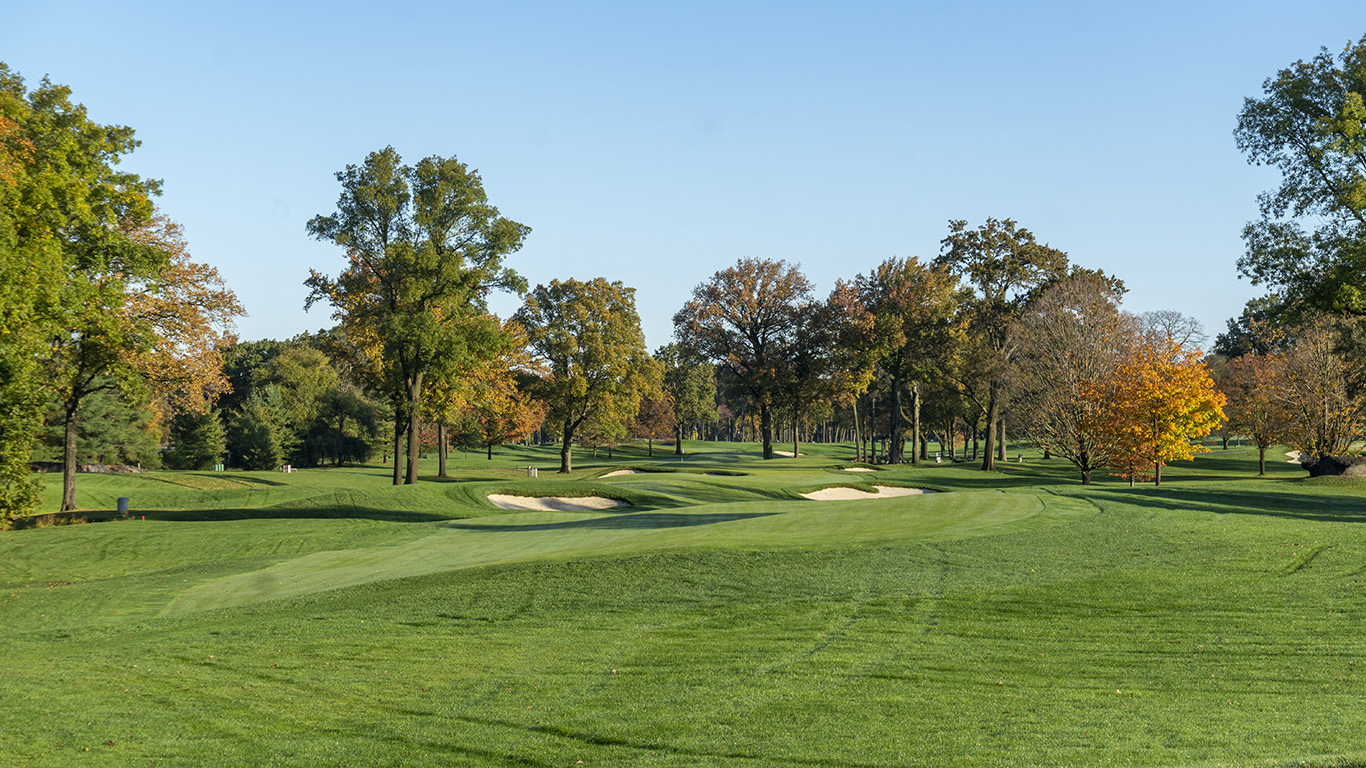
The 11th hole at Winged Foot West. Photo credit: Jaeger Kovich
-
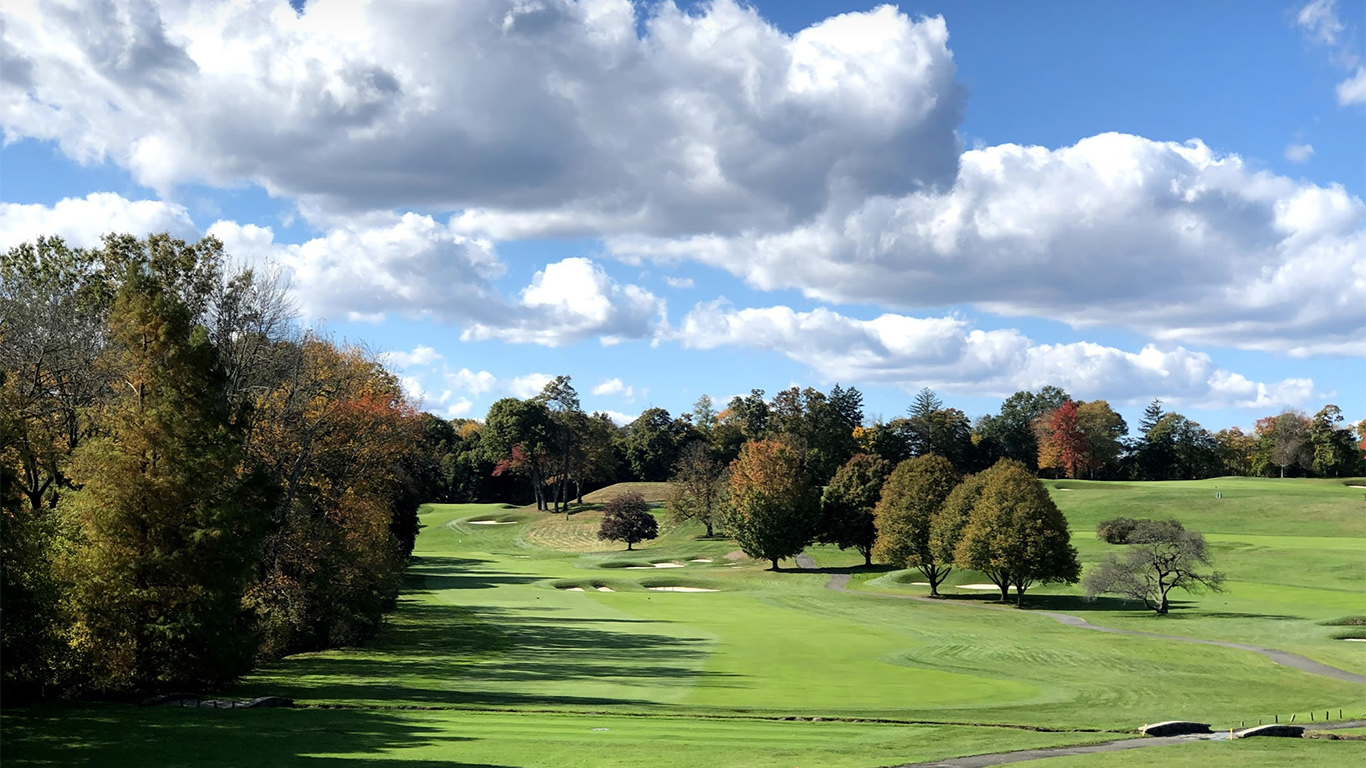
The hill that the back nine at Fenway climbs. Photo credit: Andy Johnson
The routings
Fenway – Whereas the front nine stays fairly close to the clubhouse, the back nine tacks up the big hill on the back half of the property. Like a spur, Nos. 2, 6, 9, and 18 all play back to the clubhouse, a great feature at this private members’ club.
Quaker Ridge – In a configuration known as a “Muirfield Routing,” the front nine at Quaker Ridge (or eight holes, technically) wraps around the perimeter of the property in a counter-clockwise loop with the back nine tucked into the interior. Slicers beware: the difficult outer loop has no shortage of out of bounds right. The front nine also has some extremely clever holes, like Nos. 4, 6, 7, and 8, where creeks and centerline hazards work with the OB lines to create some exciting golf.
Winged Foot – The East and West Courses consist of 36 intertwined holes, an incredible routing feat on its own. Tilly makes use of the natural land where he can but doesn’t hesitate to sculpt bold features to fulfill his commission of creating two “man-sized courses.” The East Course does not return to the clubhouse not on No. 9 but rather on No. 10. And it is often 18 East you see pictured alongside with 9 West against the clubhouse patio, the two greens sharing bunkers.
-
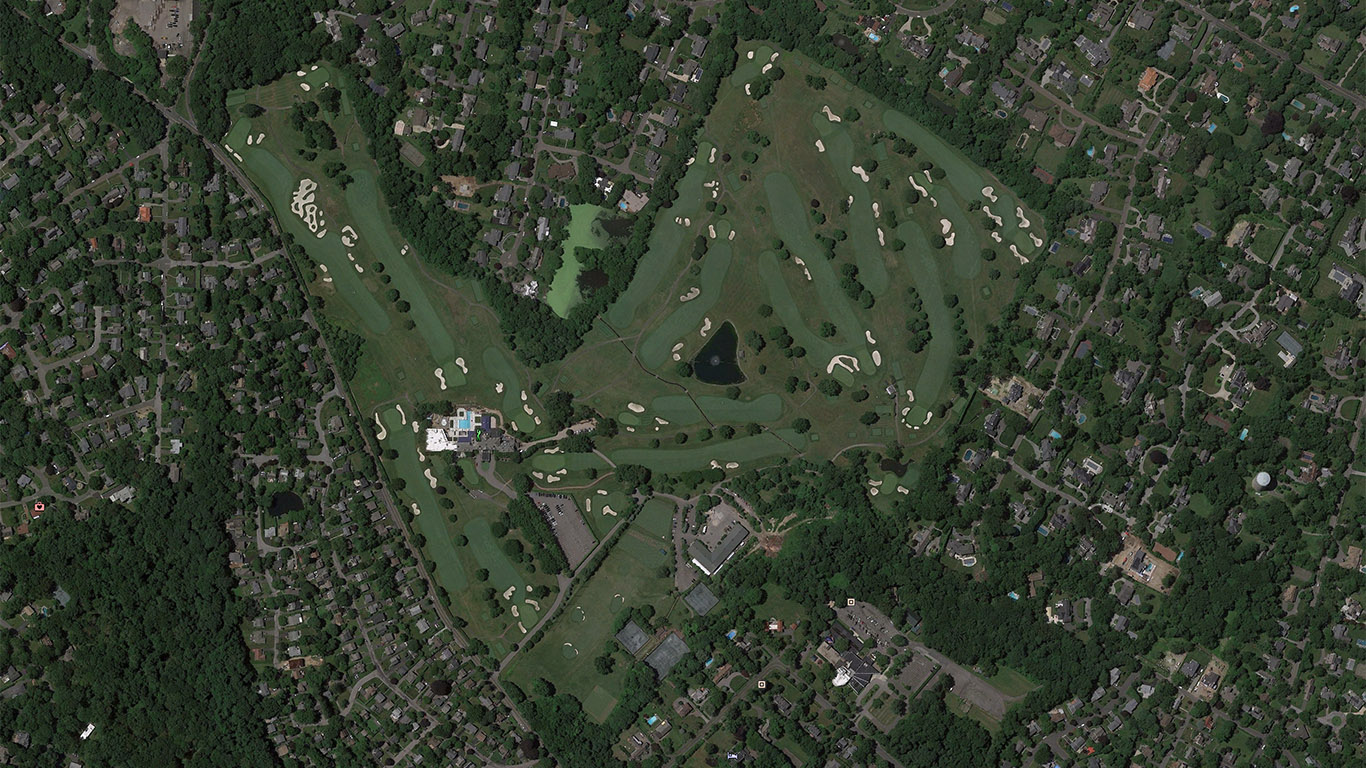
The Fenway routing (Google Earth)
-
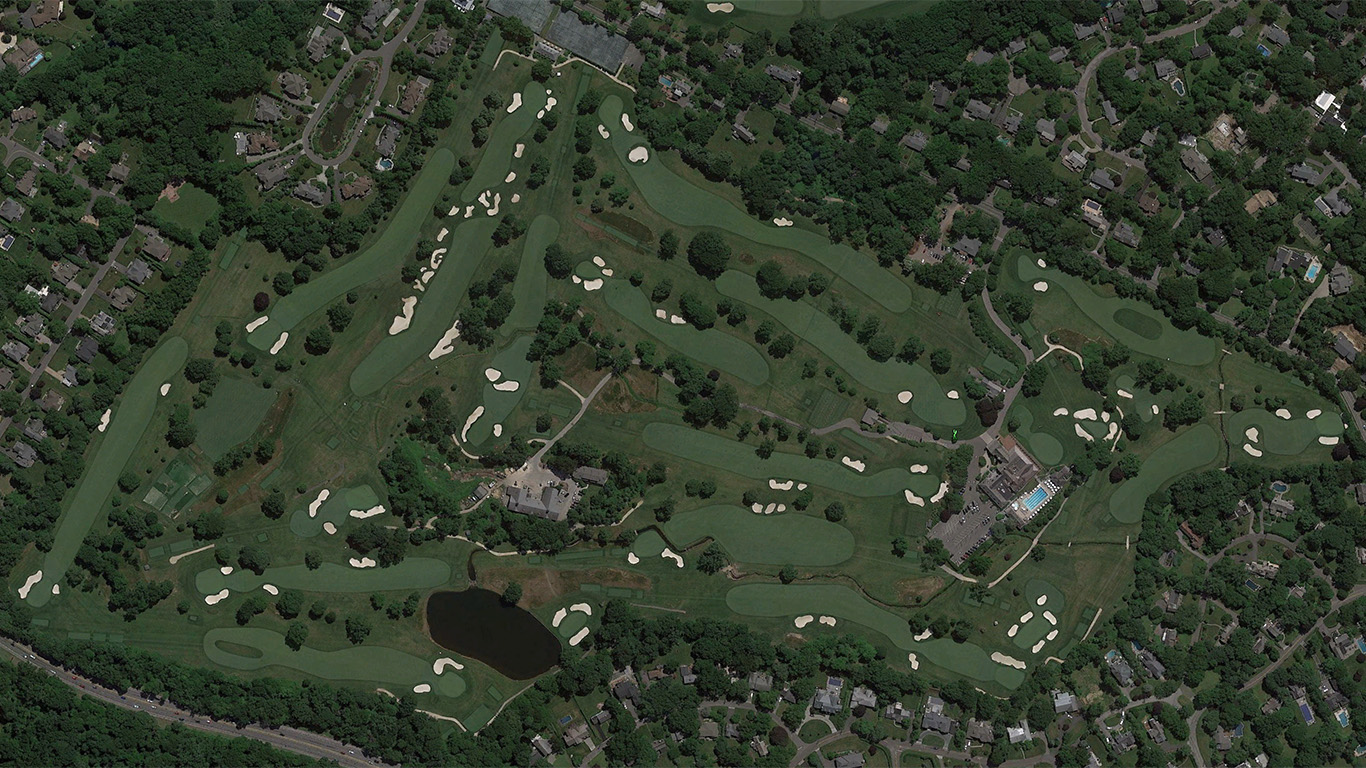
The Quaker Ridge routing (Google Earth)
-
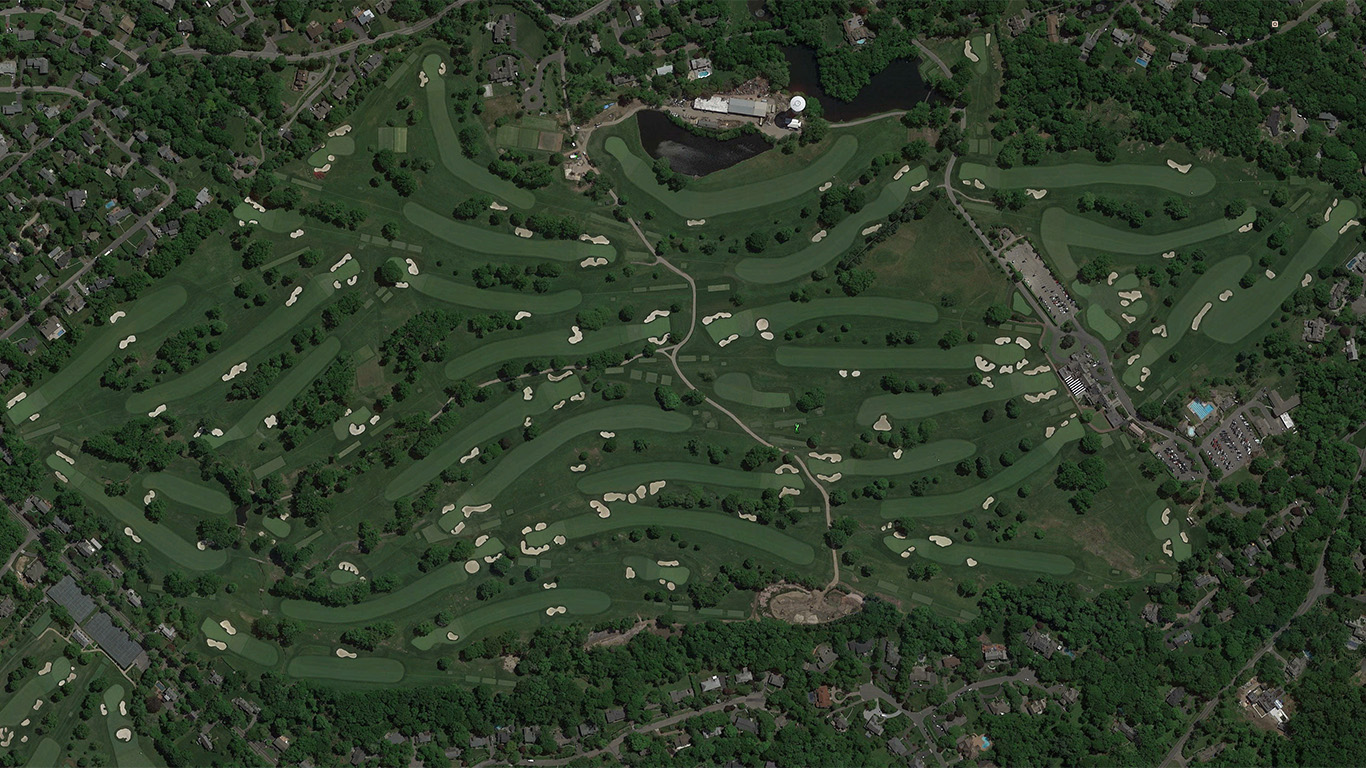
The Winged Foot East and West course routings (Google Earth)
The greens
The number and variety of interesting green complexes A.W. Tillinghast created across his 72 holes in Scarsdale/Mamaroneck is astounding.
Fenway – Here Tilly employs big transitions between different levels within greens. For example, the 2nd green has a step of about five feet between its left and right sides, whereas the par-3 3rd has two steps front to back. There are also some severe, wing-like shoulders protecting the edges of a few greens, making short-siding yourself at Fenway really, really bad. Finally, the narrow greens on 8, 9, 12, and especially 15 make unique demands on accuracy. Maybe an idea for golf architects trying to combat distance gains?
Quaker Ridge – The most subtle of the four courses, Quaker is not really subtle at all! But most of the undulations on the greens here are more fit into the ground. Still, there are a handful of spines that divide greens and sweeping breaks of multiple feet. From the long, elegant slopes on No. 11, to the wild 13th green, with its diagonal swale creating triple breakers, to the elephant buried in the middle of the 14th green, Quaker’s greens suffer from no shortage of variety.
Winged Foot – The greens at Winged Foot are about as bold as greens can get. The dramatic contours have been the courses’ primary defense against the best players for 97 years. Often raised a few feet above natural grade, the greens are not easy targets, even from the ideal angles. Do not be surprised if you see players aim their putts well away from the hole, praying to negotiate the treacherous slopes with a two-putt. A.W. Tillinghast, who treated his greens like the faces of a portrait, built his Mona Lisa at Winged Foot.
-
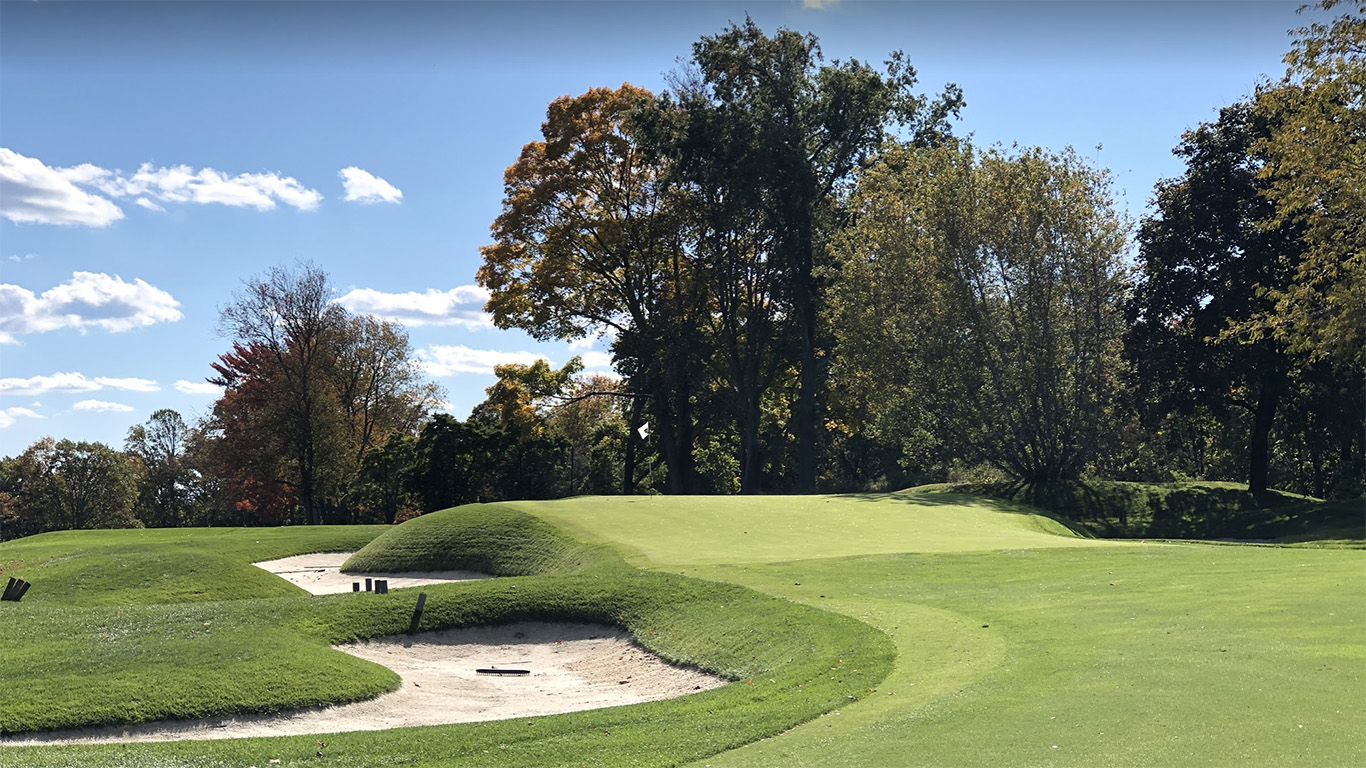
The 15th green at Fenway. Photo credit: Andy Johnson
-
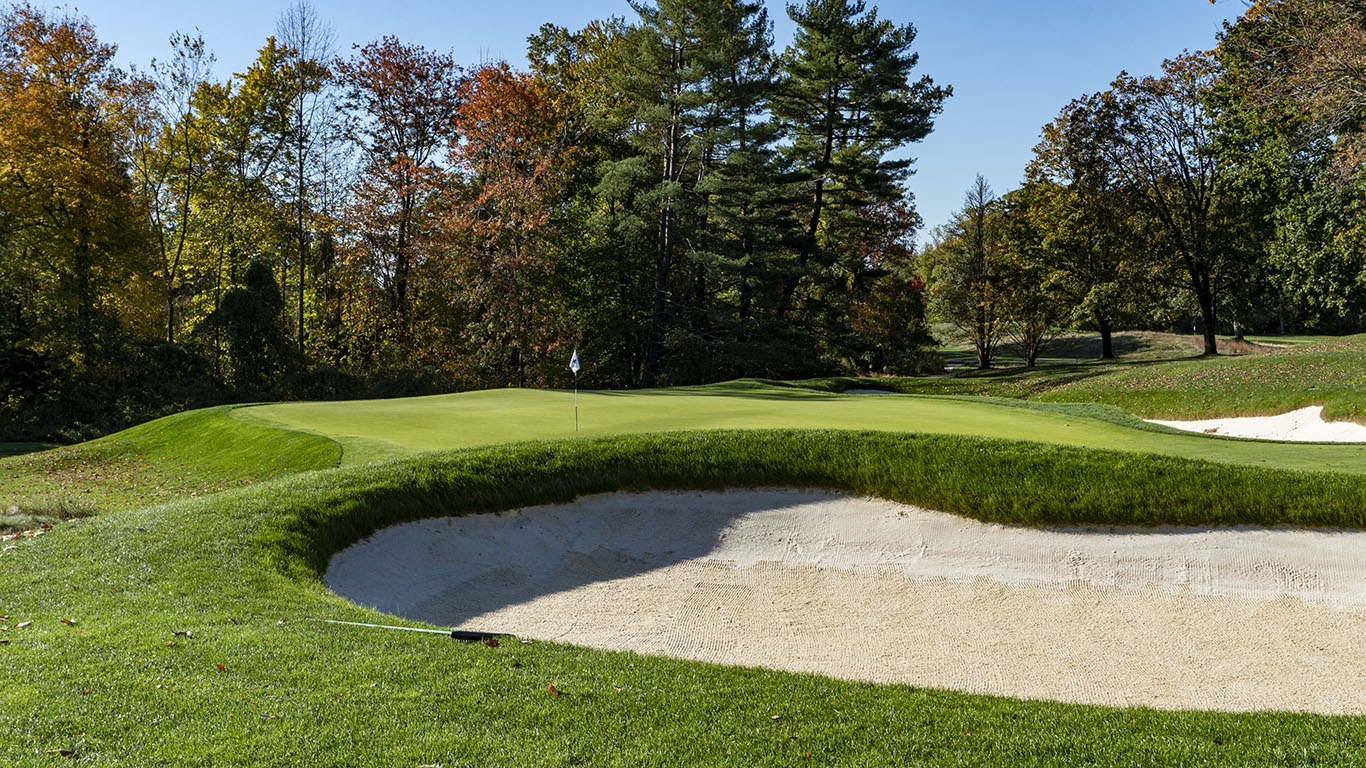
The 13th green at Quaker Ridge. Photo credit: Andy Johnson
-
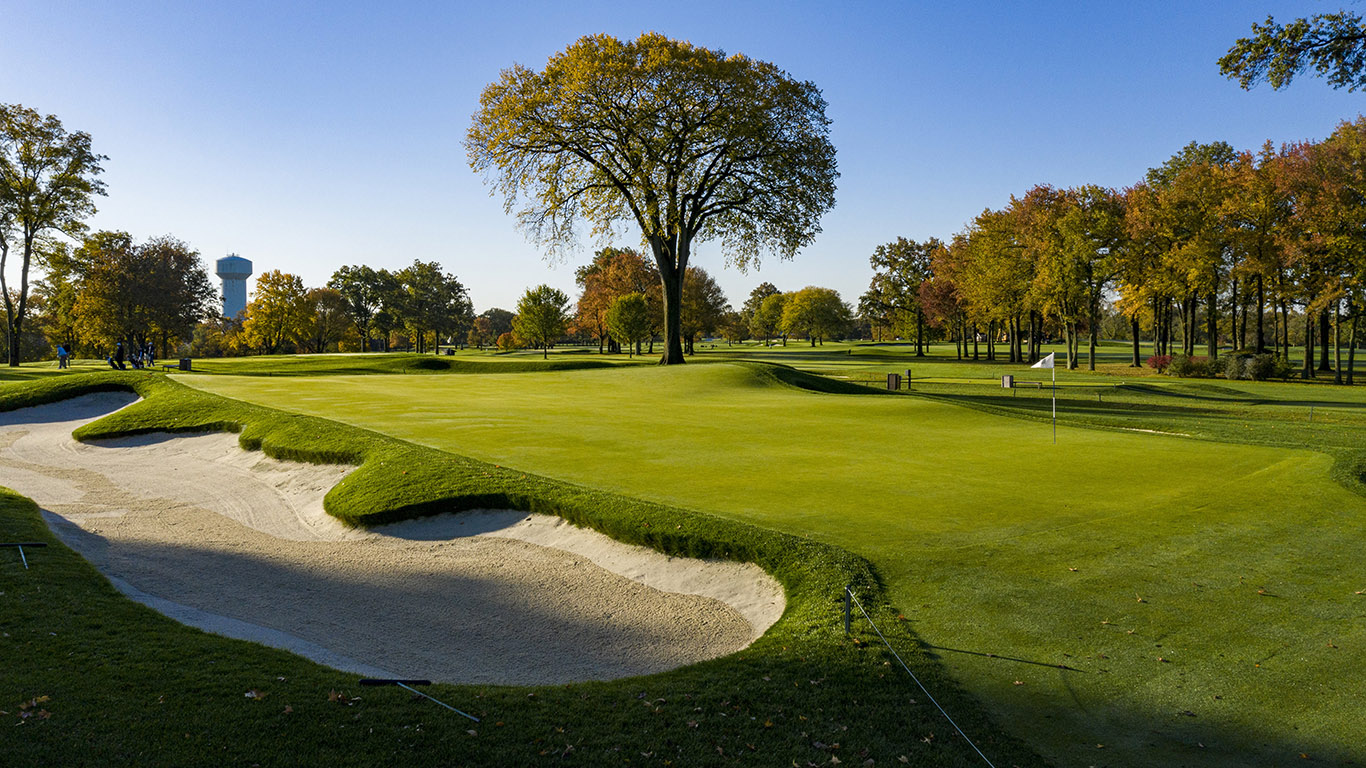
The 5th green at Winged Foot West. Photo credit: Andy Johnson
The bunkers
Winged Foot – These “man-sized courses” have by far the biggest and most artistic bunkers of the three clubs. Higher, flashed sand, more elaborate tongues, and serpentine shapes perfectly complement the bold greens.
Fenway – Most of Fenway’s bunkers are grass-faced ovals or figure-eight shapes, but photographs can’t capture their depth. The enormous Sahara complex on No. 3 is a stand-out, while the shared bunker between the greens at Nos. 8 and 12 also adds a bit of classic Tilly flair. Then there’s the amphitheater of sand he created on No. 14, an underrated hole.
Quaker Ridge – Pretty much right between the other two styles. The noses and fingers on Quaker’s bunkers are more simplified than those on Winged Foot’s, but lips are flashed in some places and rolled over in others. It’s an elegant style for this quintessential parkland golf course, often called “Tilly’s Treasure.”
-

Above Nos. 13, 16, and 12 at Winged Foot West. Photo credit: Andy Johnson
-
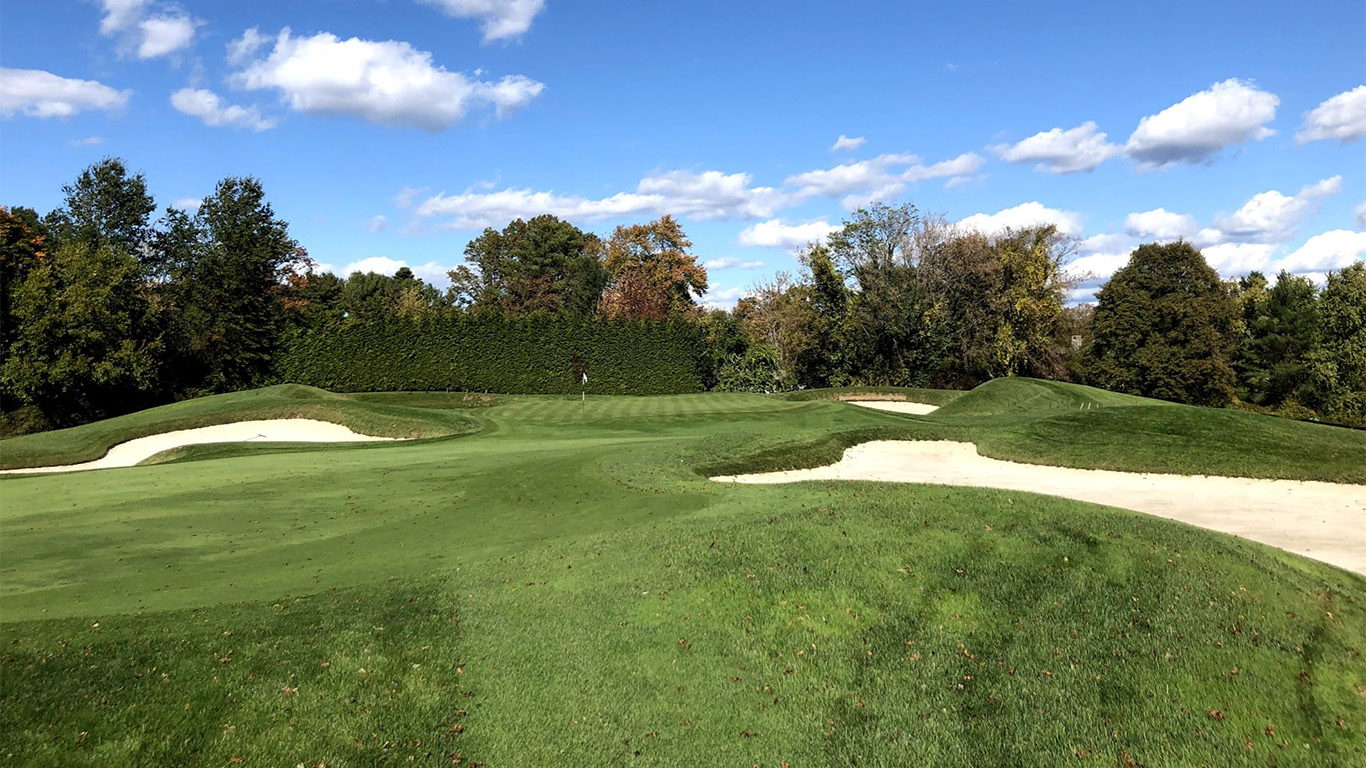
The 14th hole at Fenway. Photo credit: Andy Johnson
-
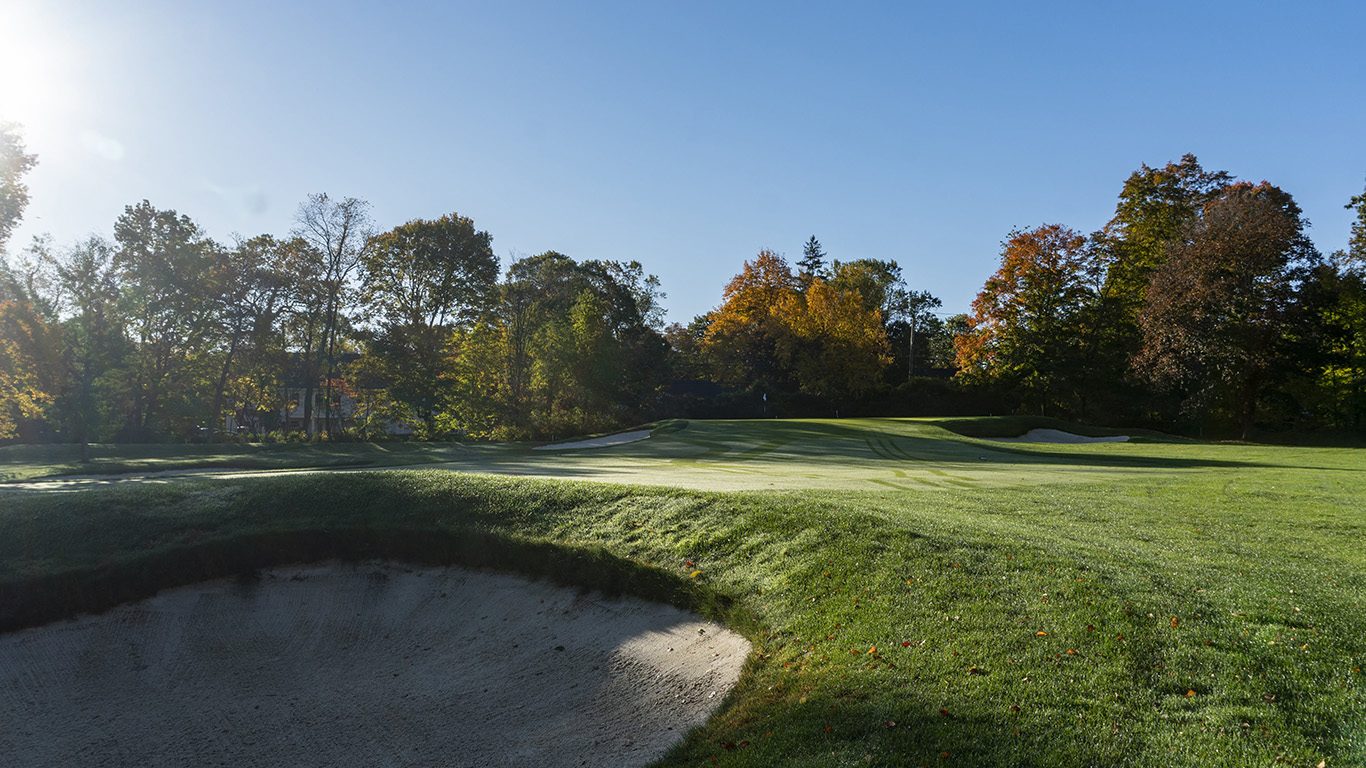
The 7th hole at Quaker Ridge. Photo credit: Andy Johnson
Notable holes
A trio of short par 3s
Winged Foot East, No. 13 – One of the most beautiful holes on property and playing only 143 yards, this has been called “the shortest par 5 in America.”
Quaker Ridge, No. 9 – This par 3 calls for a short to mid-iron, but the triangular green has some very difficult corner pin positions. Surrounded by bunkers and beautiful trees, and set to the side of the clubhouse, the Quaker’s 9th may have a Redan influence: you should use the big slope to get at the back hole location, and don’t miss right.
Fenway, No. 4 – The shortest par 3 at Fenway also has the most charm of the bunch. This wild, three-tier green has recently been expanded. Finding the right level of this green is not easy, even when chipping or putting between them.
-
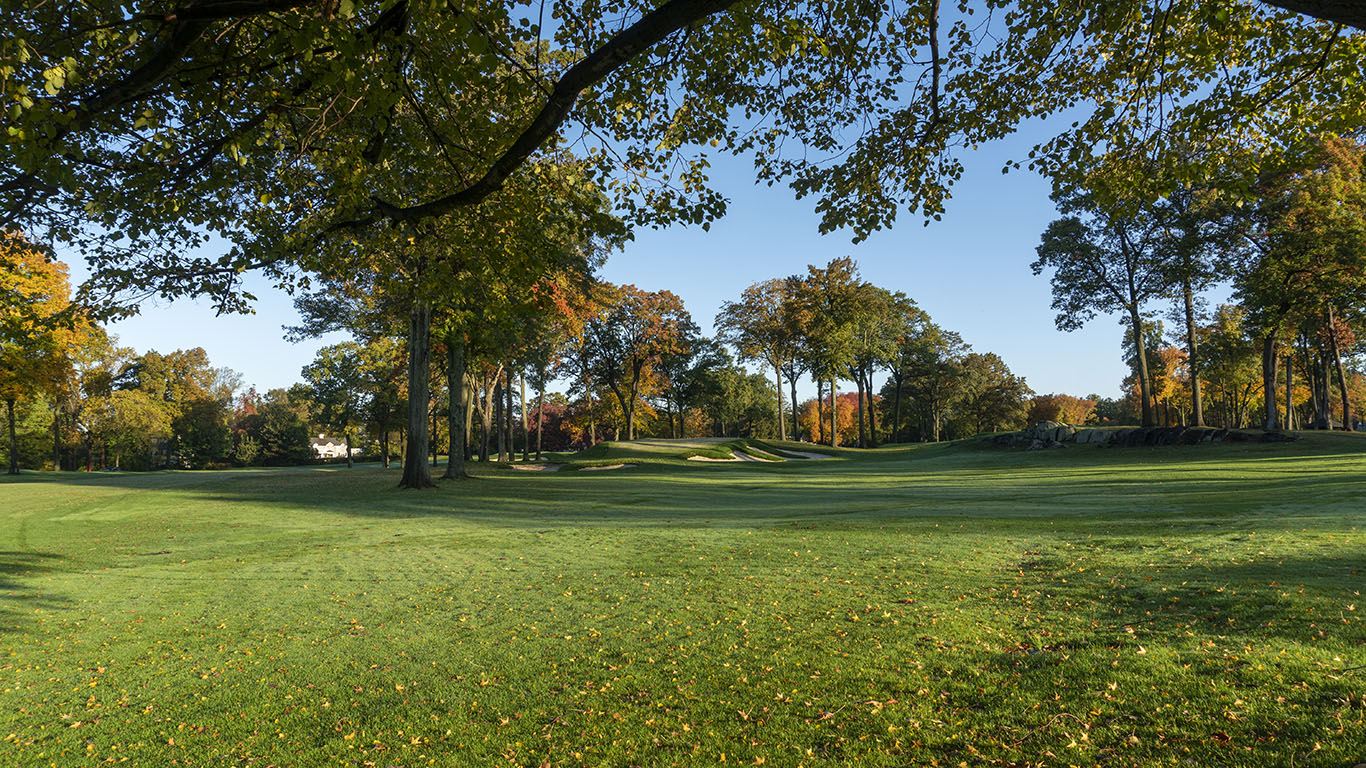
The 13th hole at Winged Foot East. Photo credit: Jaeger Kovich
-
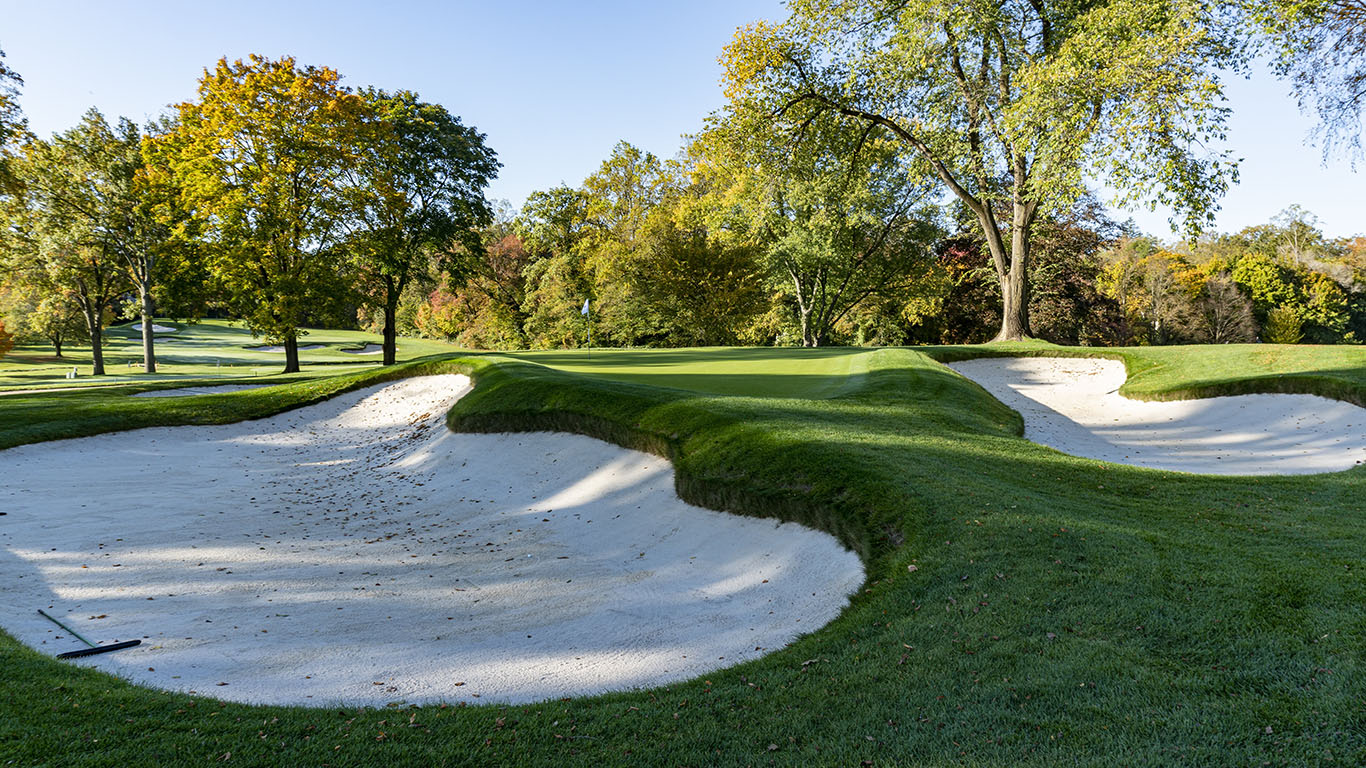
The 9th hole at Quaker Ridge. Photo credit: Andy Johnson
-
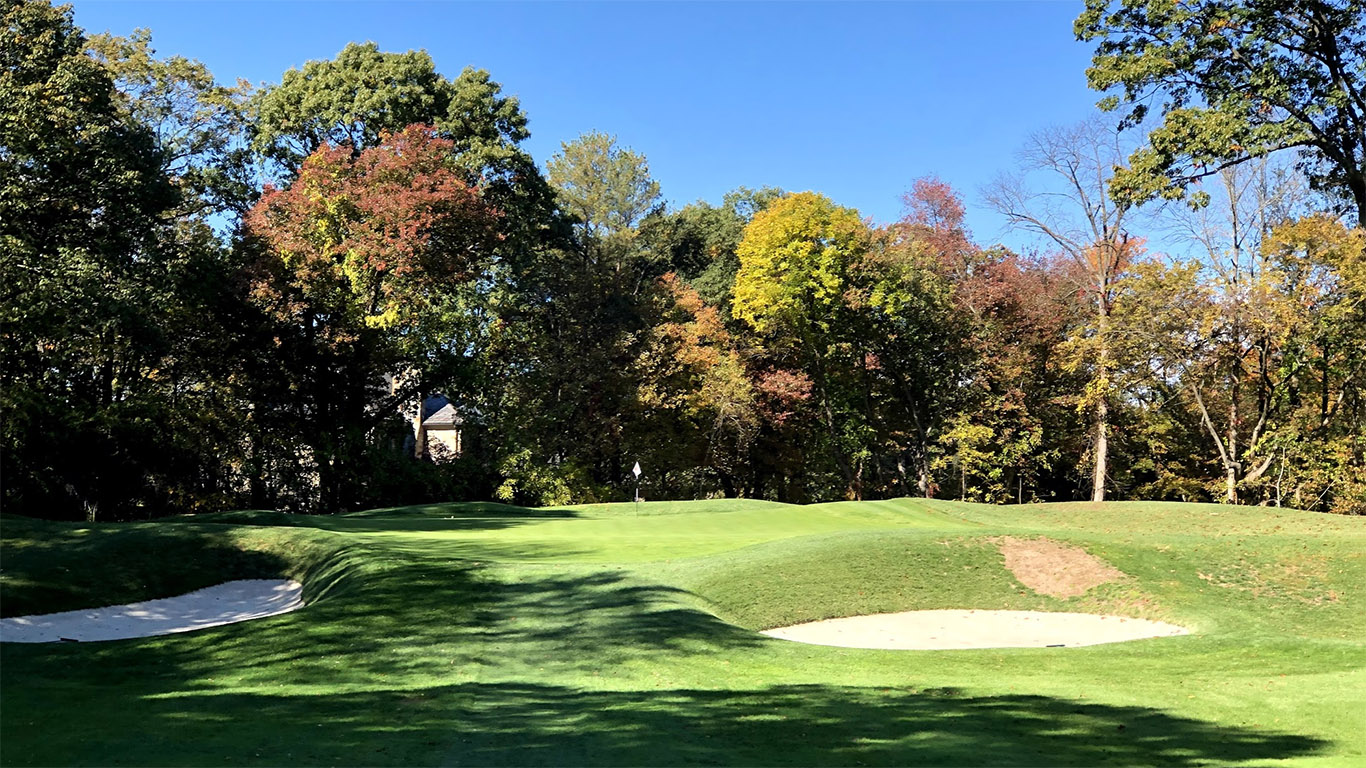
The 4th hole at Fenway. Photo credit: Andy Johnson
Par 5s – As strange as it may sound, and as great of a green as No. 12 on the West Course may be, Quaker Ridge and Fenway have the two standout Par 5s on Old White Plains/Mamaroneck Road. The Great Hazard holes at Quaker (No. 14) and Fenway (No. 3) are more dramatic and fun to play day in and day out. With different but equally imaginative takes on the look of the sandy hazards, both holes have greens split into a right and left halves by severe slopes.
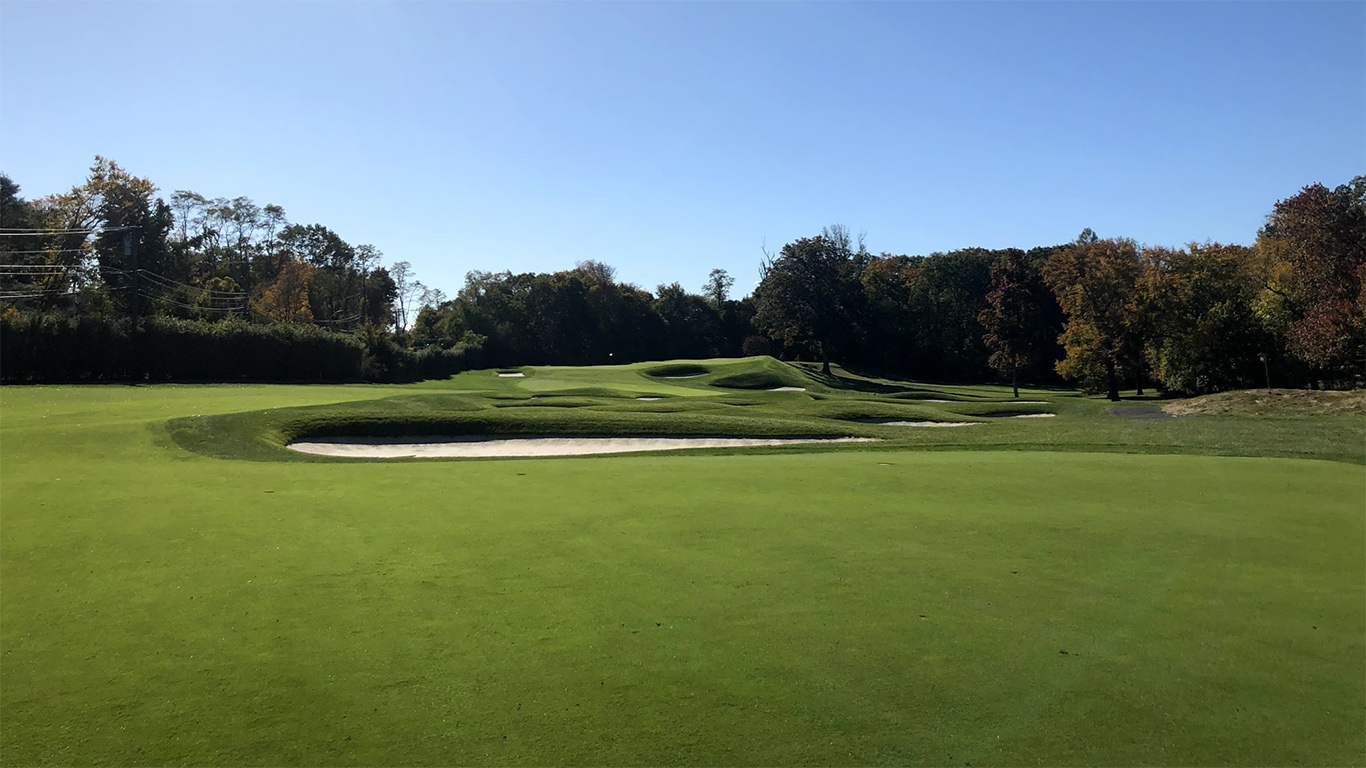
The Great Hazard at Fenway. Photo credit: Andy Johnson
Fenway’s polarizing 1st hole – With back tees just steps from the door to the men’s locker room, Fenway’s opening hole is drivable. It’s only 230 yards to carry the cross bunker and 260 to the front of the green. The green itself is wild, running away from the player and containing two table-top plateaus. The closer you get on your first shot, the better. Otherwise, hit an iron off the tee, leave yourself a full wedge and play for 4. Either way, this hole requires you to think from your very first shot.
◊
As Winged Foot West hosts its sixth U.S. Open, we have an opportunity to reflect on the variety and creativity of A.W. Tillinghast’s architecture. If you have made the pilgrimage to Bethpage Black, or are lucky enough to have seen one of his other courses, you understand that special feeling that Tilly’s designs offer. Yes, a few other corners of the world have equal concentrations of high-quality golf, but is there, anywhere else in the world, such a great museum for a single architect’s work? So as nearly perfect as Winged Foot West is, it’s really the combination of Tilly’s four courses that makes this little corner of Westchester one of the best places to study golf architecture in the world.


 by
by 
